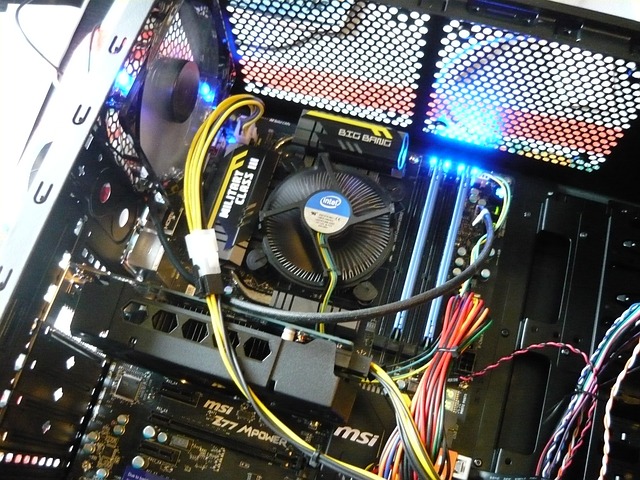
ELECTRICAL AUDIT
Title: 10 Essential Steps for an Effective Electrical Safety Audit: Ensuring Workplace Safety and Compliance
Introduction:
Electrical safety is of paramount importance in any workplace. With the potential hazards associated with electrical systems, conducting regular safety audits becomes crucial to identify and address any deficiencies that may compromise the safety of employees and the integrity of the workplace. In this blog post, we will explore the ten essential steps for conducting an effective electrical safety audit, providing you with valuable insights and practical guidance to ensure workplace safety and compliance.
Understanding the Importance of Electrical Safety Audits:
The significance of electrical safety audits in preventing accidents, injuries, and property damage. The legal and regulatory requirements governing electrical safety audits.
Establishing Audit Objectives and Scope:
Defining the objectives of the electrical safety audit based on organizational needs and industry standards. Identifying the scope of the audit, including the specific areas, systems, and equipment to be assessed.
Conducting a Comprehensive Hazard Identification:
Systematic evaluation of electrical hazards, including electrical shocks, fires, and arc flash incidents. Identifying potential hazards, such as faulty wiring, inadequate grounding, and improper use of electrical equipment.
Evaluating Compliance with Electrical Codes and Standards:
Reviewing adherence to local, national, and international electrical codes and standards.
Assessing compliance in areas such as equipment installation, wiring methods, and protective measures.
Assessing Electrical System Design and Layout:
Evaluating the design and layout of electrical systems to ensure they are optimized for safety and efficiency. Identifying potential issues related to system capacity, overloading, and circuit protection.
Inspecting Electrical Equipment:
Thorough examination of electrical equipment, including switches, panels, transformers, and motors. Checking for signs of wear and tear, damage, and proper maintenance.
Verifying Grounding and Bonding Systems:
Ensuring proper grounding and bonding systems to prevent electrical shocks and equipment damage. Inspecting grounding connections, conductors, and electrodes for compliance.
Reviewing Electrical Safety Procedures and Training:
Assessing the effectiveness of electrical safety procedures and training programs.
Identifying areas for improvement and reinforcing safe work practices.
Testing and Maintenance of Electrical Systems:
Reviewing the testing and maintenance records of electrical systems and equipment.
Ensuring that testing procedures are conducted regularly and documented appropriately.
Documenting Findings and Developing Corrective Actions:
Documenting the audit findings, including identified hazards, non-compliance issues, and recommendations. Developing an action plan to address deficiencies, prioritize corrective actions, and track their implementation.
Understanding the Importance of Electrical Safety Audits:
Highlighting the significance of electrical safety audits in minimizing electrical hazards.
Discussing the potential risks associated with electrical systems and the importance of preventive measures.
Establishing Audit Objectives and Scope:
Defining the objectives and scope of the electrical safety audit based on organizational needs. Identifying the areas, systems, and equipment to be evaluated during the audit process.
Conducting a Thorough Risk Assessment:
Identifying potential electrical hazards, such as faulty wiring, overloaded circuits, and inadequate grounding. Evaluating the severity and likelihood of each identified hazard to prioritize corrective actions.
Evaluating Compliance with Electrical Codes and Standards:
Reviewing compliance with relevant electrical codes and standards, including local regulations and industry guidelines. Assessing the adherence to safety protocols, installation practices, and equipment specifications.
Assessing Electrical System Design and Layout:
Evaluating the effectiveness of the electrical system design and layout in promoting safety.
Identifying potential design flaws, such as insufficient circuit protection or inadequate emergency shut-off mechanisms.
Inspecting Electrical Equipment:
Performing a comprehensive inspection of electrical equipment, including switches, panels, and wiring. Checking for signs of wear, damage, and proper functioning of safety mechanisms.
Verifying Grounding and Bonding Systems:
Ensuring proper grounding and bonding to prevent electrical shocks and equipment malfunction. Inspecting grounding connections, conductors, and bonding arrangements for effectiveness.
Reviewing Electrical Safety Procedures and Training:
Assessing the adequacy of electrical safety procedures and training programs for employees. Identifying areas for improvement and reinforcing awareness of safe work practices.
Testing and Maintenance of Electrical Systems:
Reviewing testing and maintenance records of electrical systems and equipment.
Ensuring that regular inspections, testing, and maintenance are performed and documented.
Documenting Findings and Implementing Corrective Actions:
Documenting audit findings, including identified hazards, compliance gaps, and recommended corrective actions. Establishing a systematic plan to address deficiencies, assign responsibilities, and track the implementation of corrective measures.
Conclusion:
An effective electrical safety audit is a critical component of maintaining a safe and compliant workplace. By following the ten essential steps outlined in this blog post, you can ensure that your organization meets the highest standards of electrical safety, reduces the risk of accidents and injuries, and safeguards the well-being of employees and the integrity of your operations. Remember, electrical safety is a shared responsibility, and regular audits play a pivotal role in promoting a culture of safety and compliance.
Disclaimer:
The information provided in this blog post is for general informational purposes only and should not be considered as professional advice. It is recommended to consult with qualified experts and adhere to applicable laws, regulations, and standards when conducting electrical safety audits.
Latest Posts
- All Post
- Blog
- Electrical Audit
- Electrical Inspection
- Electrical Testing




